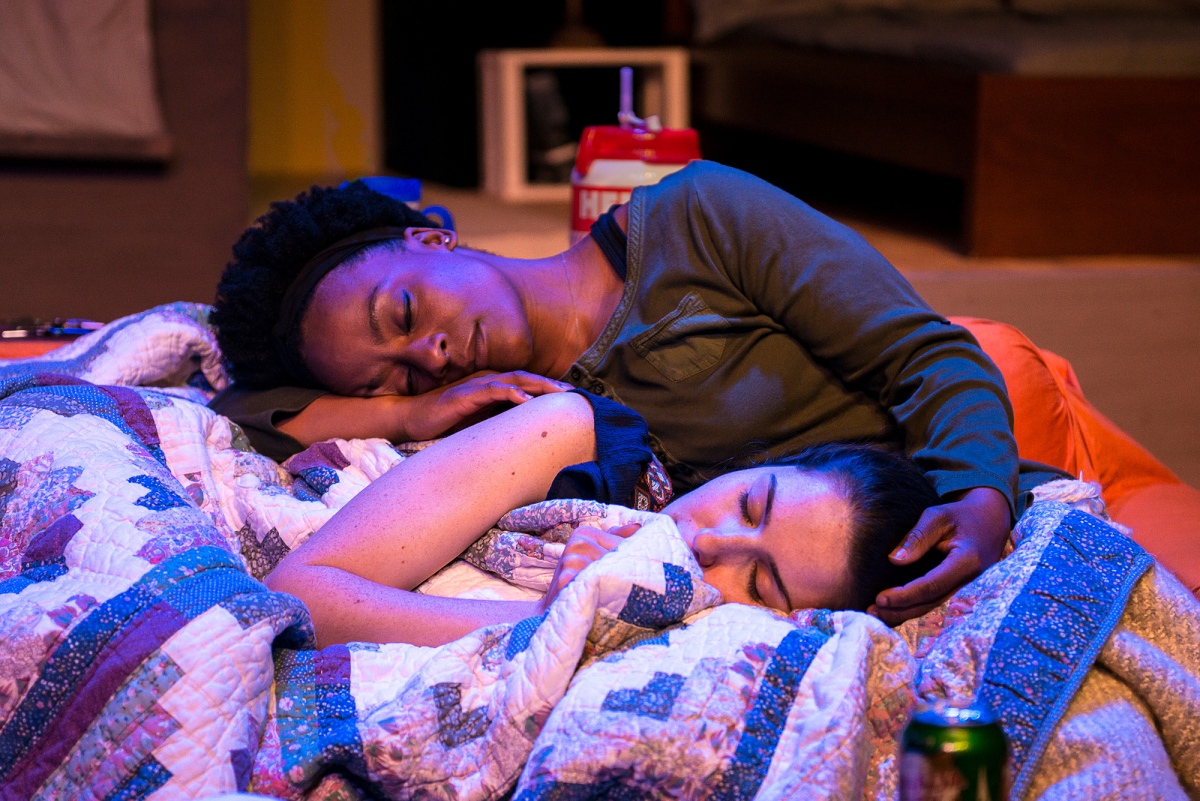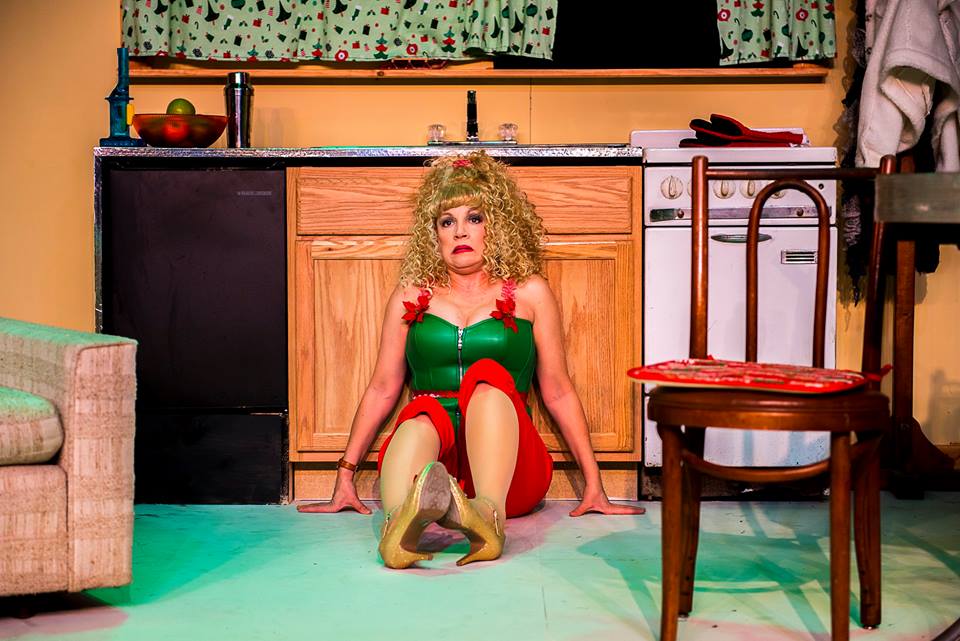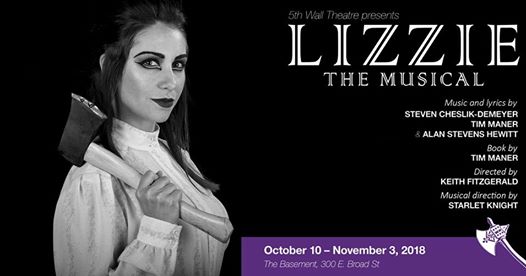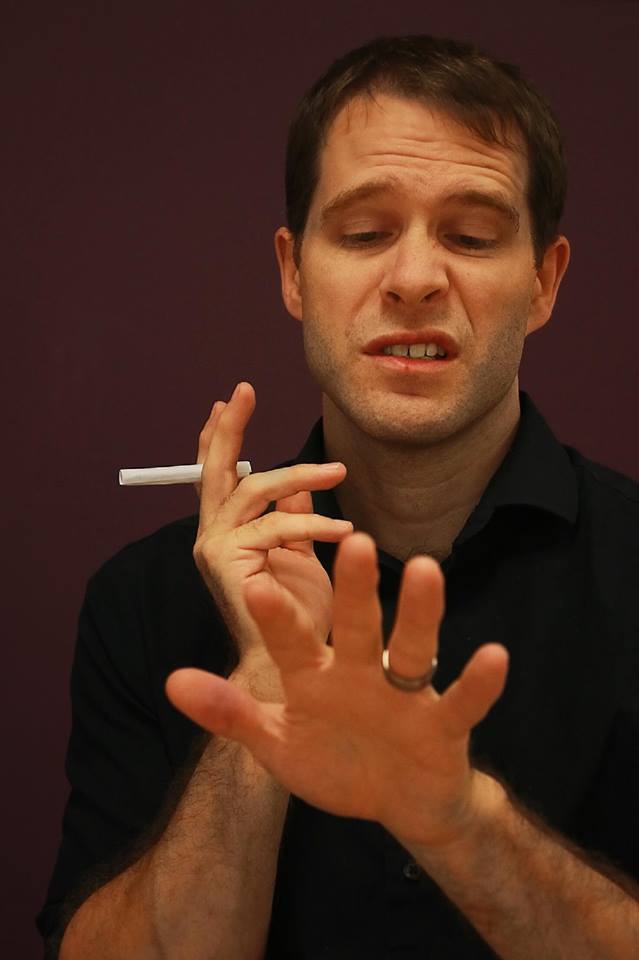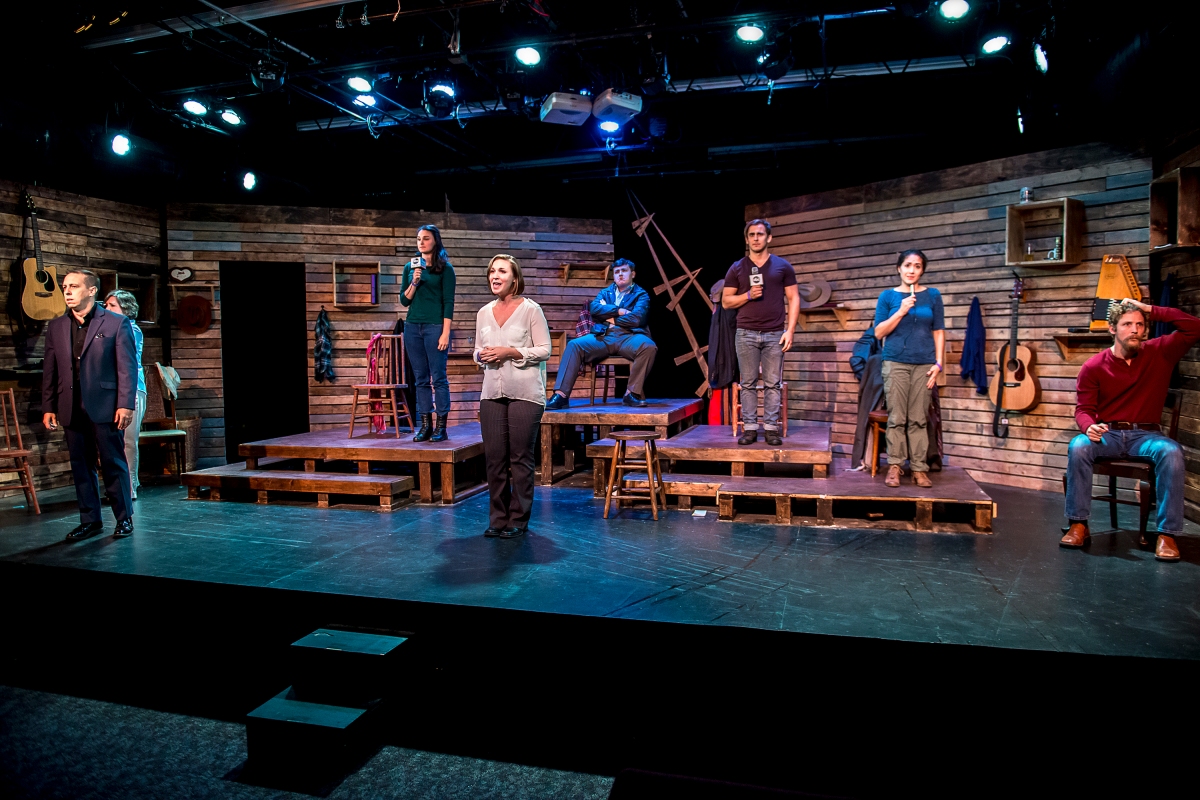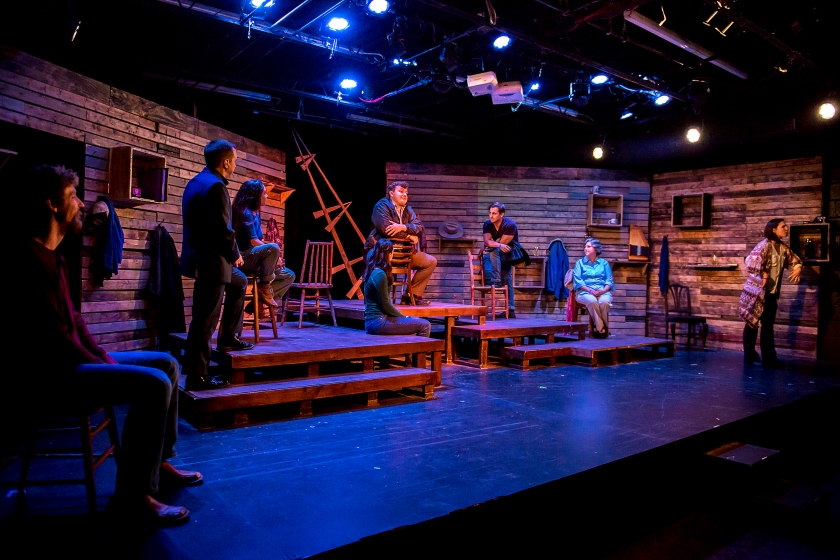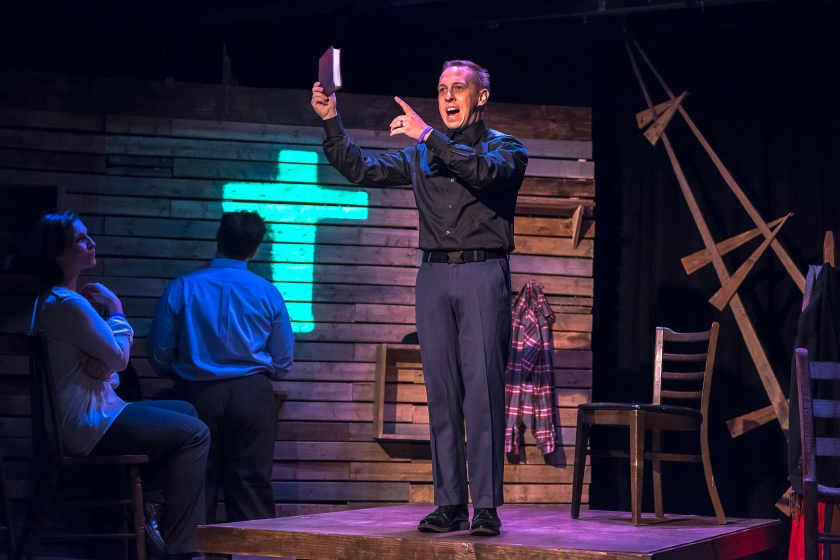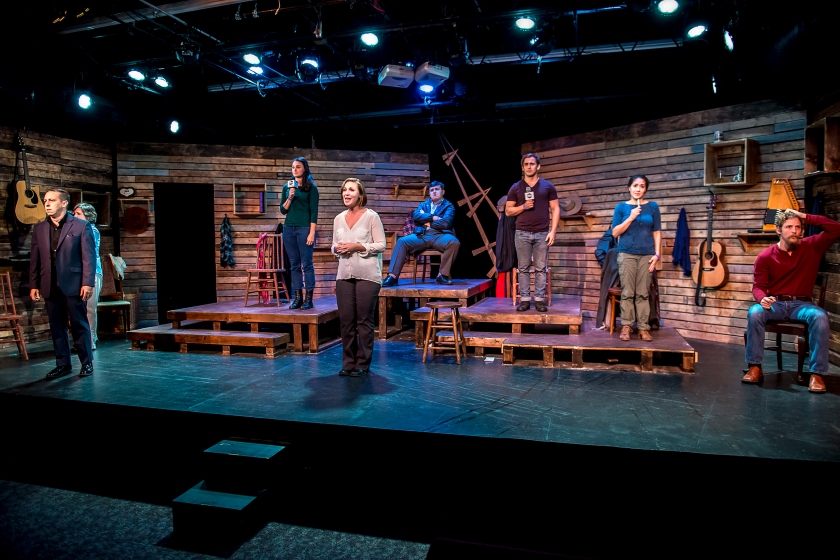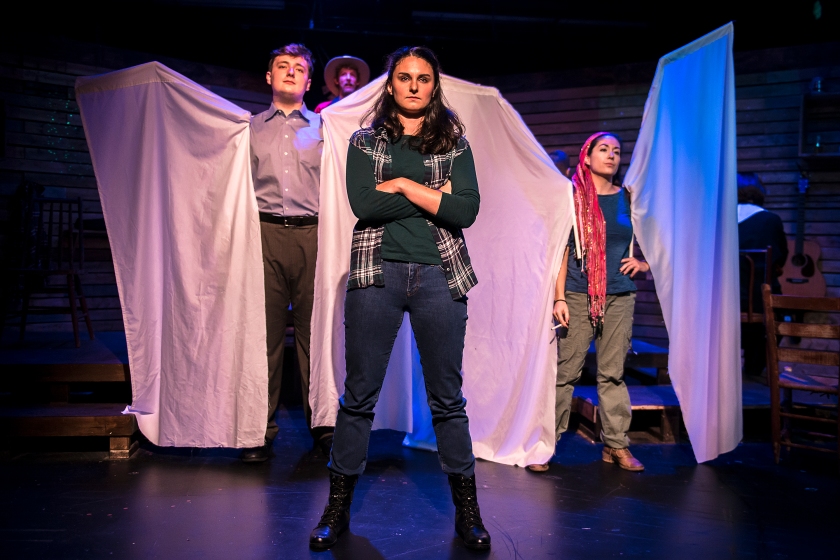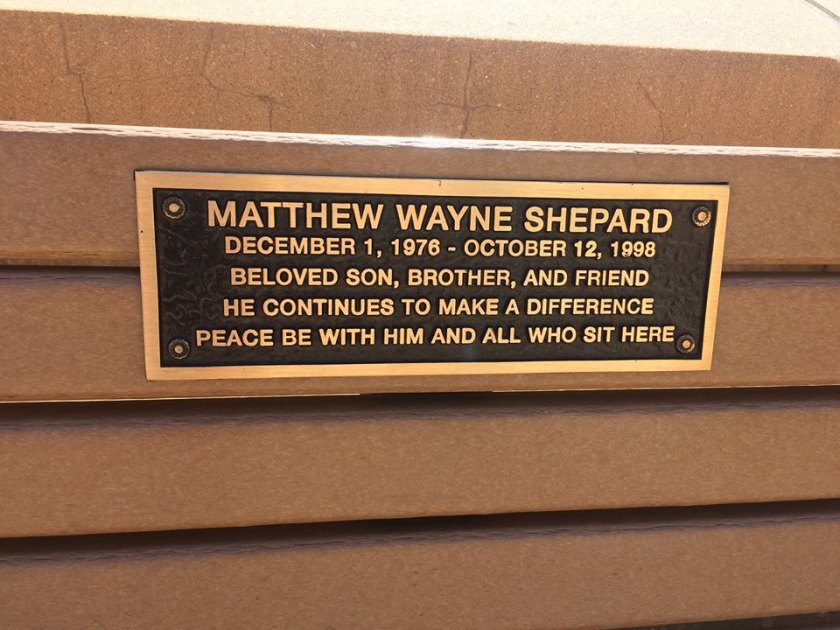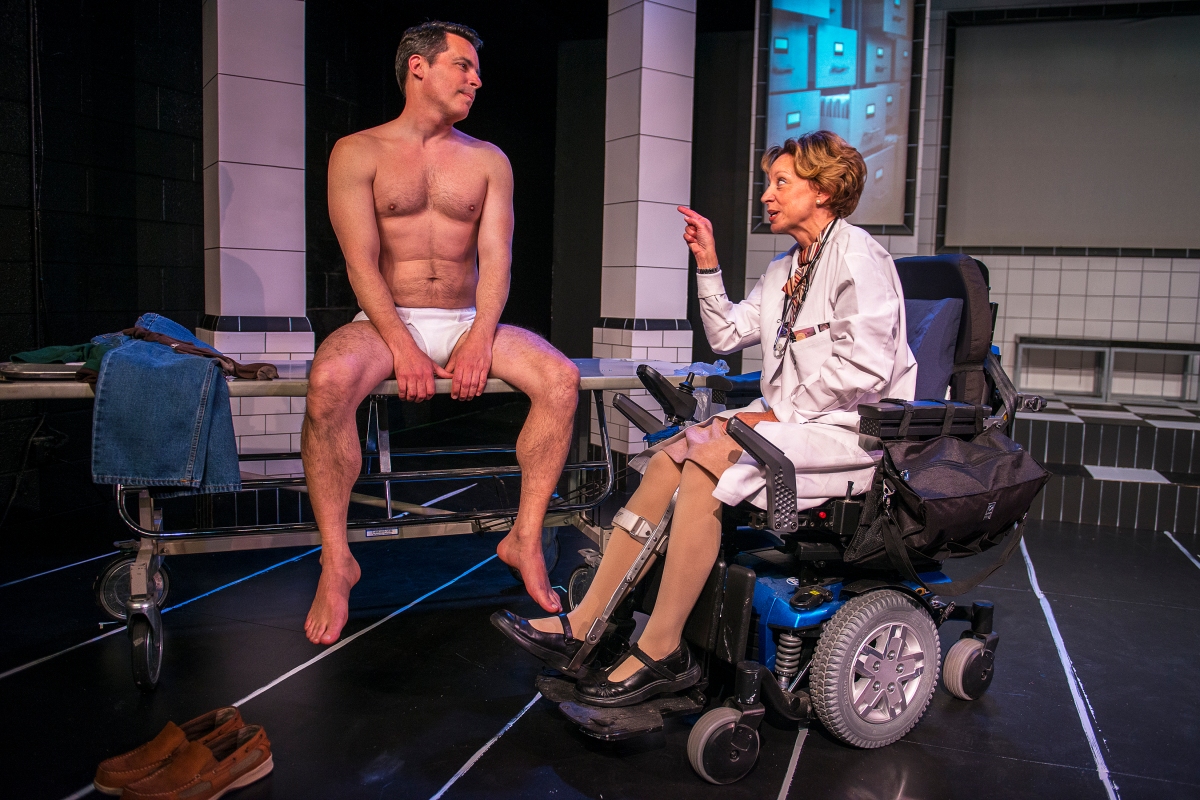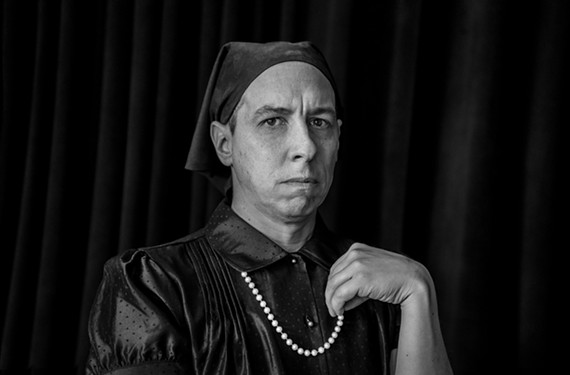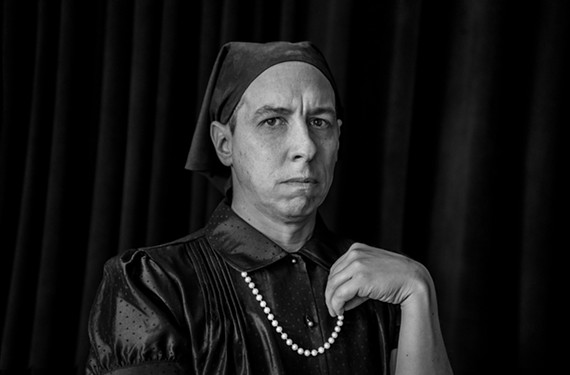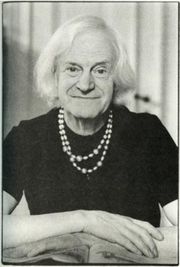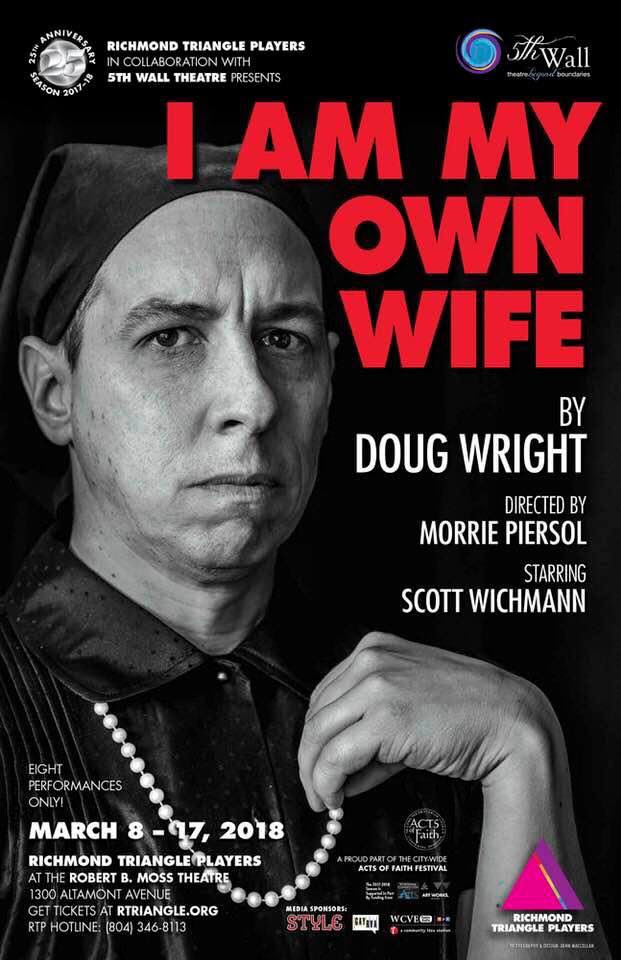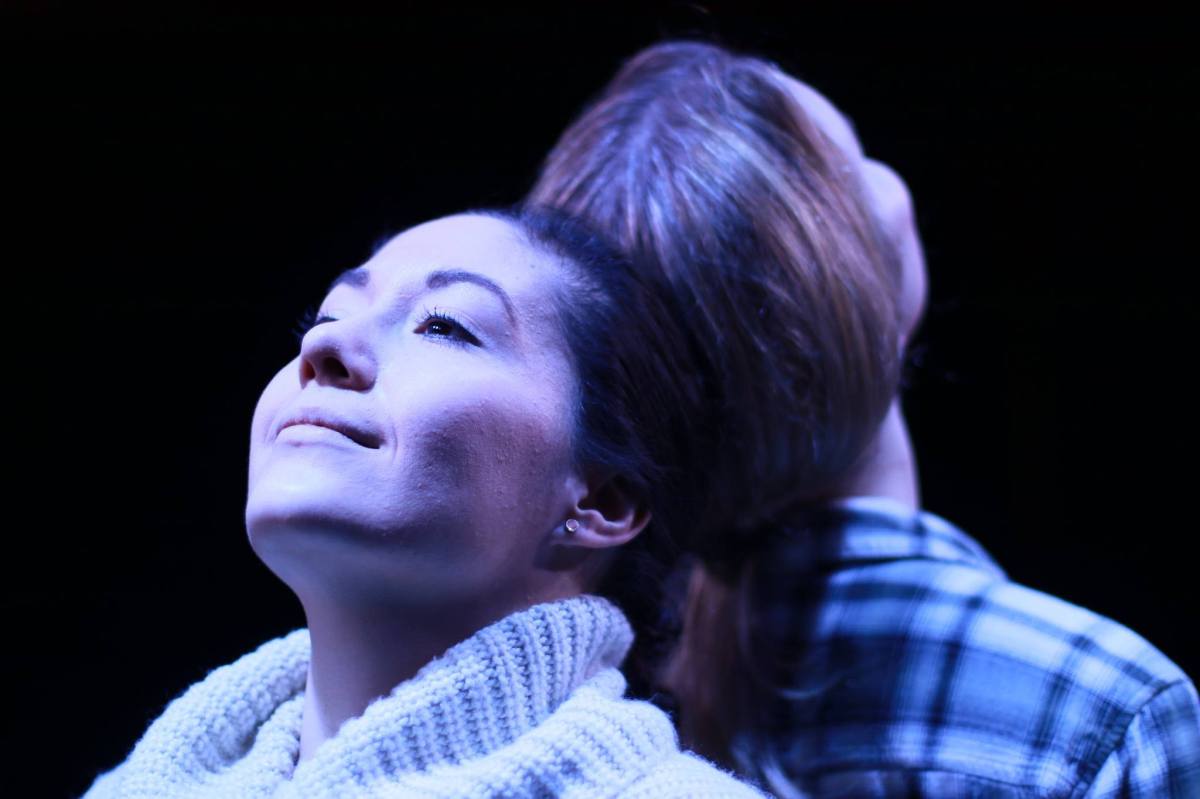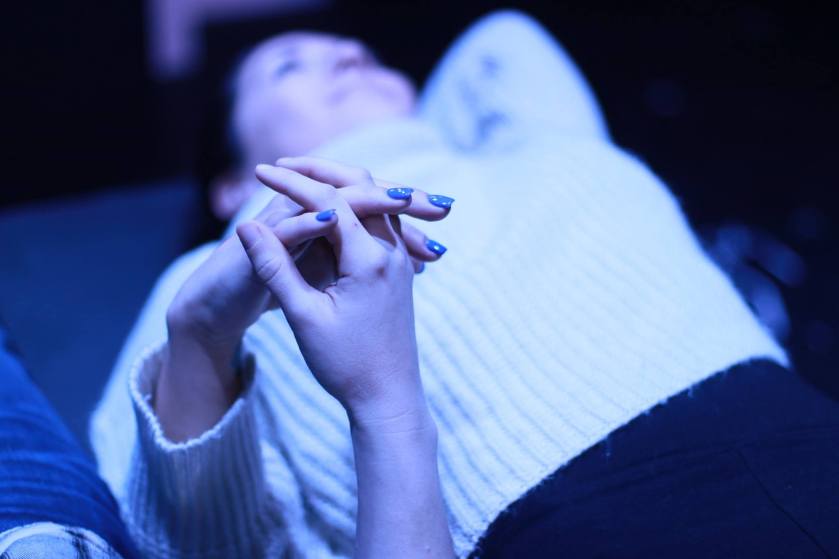Seven Homeless mammoths Wander New England: & Alternative Kinship Structures!
A Theater Review by Julinda D. Lewis
Richmond Triangle Players
At: The Robert B Moss Theatre, 1300 Altamont Avenue, RVA 23230
Performances: April 10 – May 4, 2019. (Opening Night – April 12)
Ticket Prices: $10-35
Info: (804) 346-8113 or rtriangle.org
Some works of art just defy categorization. Seven Homeless Mammoths Wander New England by Madeleine George is described as a comedy, but even though there is no lack of humorous moments, the play’s focus on complicated relationships and the academic community make it so much more. There are actually three entwined stories that are related but barely connect onstage, and each has its own cast of characters.
The main story revolves around the volatile relationship between a hyperactive, middle-aged college administrator, Dean Wreen (Annie Zanetti); her former lover Greer (Shaneeka Harrell), a professor of philosophy who has stage four cancer; and the Dean’s new, young lover, Andromeda (Meg Carnahan), a recent graduate of the university and new age apprentice. Wreen invites Greer to move in with her and Andromeda while Greer undergoes experimental treatment for her cancer, leading to awkward moments of stifled and raucous love-making between Wreen and Andromeda and tests of jealousy and monogamy involving Greer and Wreen, Greer and Andromeda, and Wreen and Andromeda.
The three women are each so fascinatingly different, but I was particularly drawn to the character Greer. Harrell has a deep, rich voice and a malleable face that speaks volumes even when her mouth isn’t moving. But it should come as no surprise that Harrell is so physically engaging, as she has extensive experience working with two of my all-time favorite dance companies: Bill T. Jones/Arnie Zane Dance Company and Urban Bush Women.
Meg Carnahan was appropriately spacy as Andromeda – whom Greer initially called by a variety of celestial names, other than her chosen one – but there’s more to Andromeda than aimless passion. She is at odds with the Dean about closing the dusty and underutilized natural history museum and becomes active in the protests to save the museum. Her obsession with watching reruns of “Friends” leads to a memorable moment of tenderness with the bristly Greer, and even brings the three women together in unexpected kinship.
Annie Zanetti, whose performance I most recently admired in a Whistle Stop Theater production of The Little Match Girl, gave the same commitment to Dean Wreen as I remember her giving to previous roles. And while it was fascinating watching her navigate the nuances of her past and present love relationships, one of the most notable scenes was with David Clark, The Caretaker of the university’s little museum that was the object of academic and personal controversy. Stopping by The Caretaker’s office to offer him an alternative position, he silently offered her a flask from his desk drawer, and Dean Wreen unexpectedly accepted. She poured out her soul to the man who had, up until then, acted as the play’s raconteur, and left his office more than a little tipsy. I think she walked home.
Clark has a solo role as a sort of narrator, keeping the audience informed of updates in the progress of the plans to shut down the university’s museum – home to seven rare mammoth skeletons, and a few dioramas of indigenous life – by reading aloud from the local newspaper. The details of planned student protests and the activities of the local town council are both informative and amusing, as read with gusto by Clark.
The final section of this trilogy is the strangest and, in some ways, the funniest – or at least the oddest. Maura Mazurowski and Ray Wrightstone play Early Man 1 and Early Man 2, respectively. They are figures in the museum’s dioramas who give voice to the random students who come into the rarely used museum. In fact, the museum is so rarely used that it has become a favorite rendezvous spot, where students can engage in romantic activities in relative privacy – except for the supposedly unseeing eyes of the mammoths and the diorama figures.
Listening to the two caveman-like figures speaking in the vernacular of modern-day students is both amusing and disturbing. In fact, it takes, like, a few scenes to figure out what’s really going on here. To make these supporting characters more challenging, they are allowed to move only their mouths, while maintaining their frozen poses.
Relationships, commitment, change, love, and passion fuel Seven Homeless Mammoths Wander New England and its tightly knit and eclectic cast. Lucian Restivo’s direction provides a variety of pacing choices. The women’s characters ring true, right down to their rituals and bickering The Caretaker’s character provides direction and humor, and the diorama characters are. . .well, different.
Chris Raintree’s multileveled set provides separate work and living spaces although I’m not sure if the ancient refrigerator was just something Dean Wreen was holding onto out of eccentricity or of it was a true marker of the time period. Perhaps it was a metaphor for the complications of her life.
Seven Homeless Mammoths Wander New England might not be everyone’s cup of tea, but if you like satire and droll humor, and have an interest in alternative kinship structures, you ought to go see this production.
Julinda D. Lewis is a dancer, teacher, and writer who was born in Brooklyn, NY and now lives in Eastern Henrico County.
———-
Photo Credits: John MacLellan

